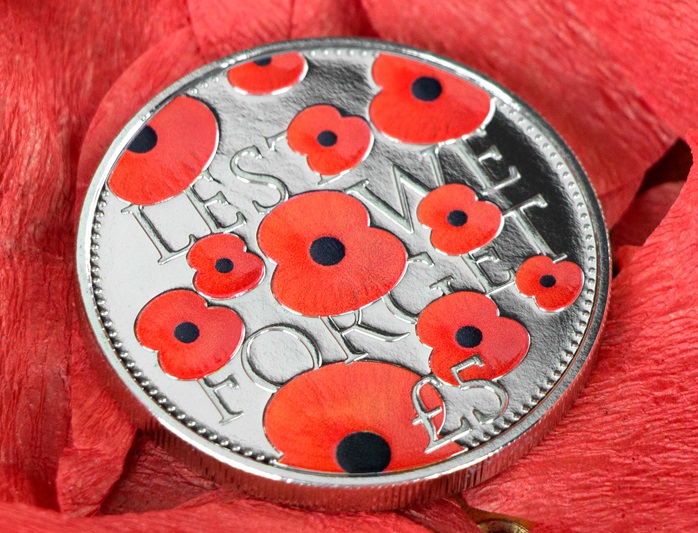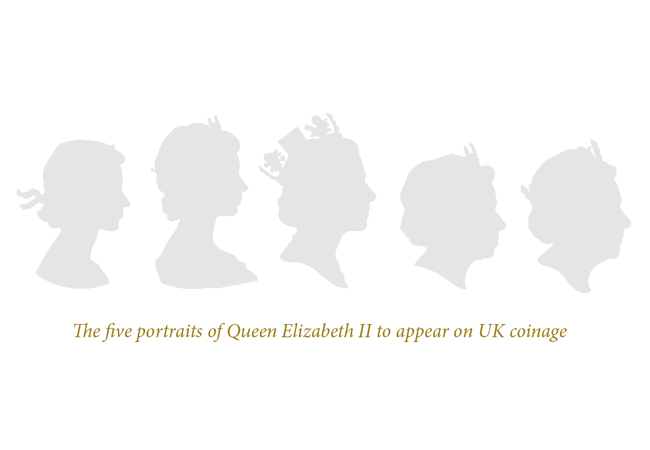Posts Tagged ‘Coin Collecting’
The Royal Jubilee celebrated for the VERY FIRST time in 2017…
Coming soon in 2017 – a remarkable British Royal Jubilee celebrated for the first time ever. Watch the video now…
The story behind the official 2016 ‘Lest We Forget’ Poppy Coin

The Official 2016 “Lest We Forget” £5 Poppy Coin
The official new Poppy Coin has just been issued in support of The Royal British Legion, and this year it is especially poignant.
2016 is a milestone year as it marks the 100th anniversary of the Battle of the Somme, the First World War battle that has come to symbolise the awful tragedy of the conflict.
To pay respect to those who served, the new coin’s design has been inspired by the falling poppies at the annual Festival of Remembrance – held in the Royal Albert Hall.
I caught up with designer Matt Tindall to ask him about the design:

Matt Tindall, designer of the Official Poppy Coin 2016
“As this is the only official Poppy coin issued in support of The Royal British Legion I wanted to make sure the design was instantly recognisable, yet also had a subtle reference to the importance of the year 2016.
“The wording “Lest We Forget” from Laurence Binyon’s Ode of Remembrance seemed particularly fitting – and the quotation is covered by 11 falling poppies which of course represent the 11th hour of the 11th day of the 11th month.

Designing the official 2016 Poppy Coin
“My grandfather served during the First World War in the South Staffordshire Regiment so it was a real honour to be asked to design the Poppy Coin. The Royal British Legion has always had such an important role in this country and I only hope this coin goes some way to helping their work.”
A coin for everybody
A whole range of different coin specifications are to be struck, meaning there is a coin for every collection. From a special Proof quality cupro-nickel £5 coin – right up to an astonishing 5oz Gold edition, the new Poppy Coin is undoubtedly a moving tribute for Remembrance Day in this historic year.
Officially issued in support of The Royal British Legion
To support the work of The Royal British Legion, The Westminster Collection have organised for a donation from the sale of each coin to go directly to the charity, helping them to continue to provide financial, social and emotional support to all who have served and are currently serving in the British Armed Forces and their families.
If you’re interested…
The 2016 “Lest We Forget” Proof £5 Poppy Coin is available now. Click here for more details and to add one to your collection today…
A donation from the sale of each coin will go directly to The Royal British Legion.
200 years of the Sovereign. Part VI: The UK’s Premier Gold Coin

2017 sees the Gold Sovereign’s bicentenary, and to mark the occasion a special one-year-only design has been unveiled, recreating Pistrucci’s original 1817 engraving. It’s a truly fitting tribute and acknowledges the rich history of the coin which I’ve been exploring in these blogs. If you missed the previous posts you can start from the beginning here, but now here’s the final chapter in the sovereign’s history so far…
In Part V, I explored the decline in production of Gold Sovereigns as a result of World War I and the worldwide economic crisis, which lead to the end of the Sovereign. Until 1957 when it was revived once again…
Apart from one special limited edition commemorative issue for King George VI’s coronation in 1937, no Sovereigns had been struck since 1932. In 1953, Sovereigns were produced for Queen Elizabeth II for the Coronation Sets but they were for national collections, not collectors.
The Sovereign’s revival
Then in 1957, worldwide demand for the coins became so great that The Royal Mint resumed production of bullion gold Sovereigns for circulation. Not only would this satisfy demand, it would also blunt the premium that was making it so lucrative to counterfeit the coins.
These early ‘restoration’ Sovereigns of Queen Elizabeth II’s reign feature Mary Gillick’s portrait of the young Queen on the obverse, engraved especially for her new coinage.
The portrait design was changed in 1968 prior to Decimalisation in 1971, to a portrait by Arnold Machin. This portrait still features on postage stamps all these years later.
A new market emerges
Queen Elizabeth II’s reign has been a time of change for the Sovereign. A new market has emerged – the collector’s market.
In 1979, The Royal Mint produced the first proof version of the Sovereign of her reign. This higher grade version was limited to just 12,500 pieces and proved very popular with collectors.
With a newfound interest from collectors, it is not surprising that we have seen more design variations of the Sovereign than ever before.
A third portrait design by Raphael Maklouf was used from 1985 to 1997 and a fourth by Ian Rank-Broadley FRBS replaced this until 2015 when Her Majesty’s portrait was updated by The Royal Mint engraver, Jody Clark.
The UK’s Premier Gold Coin
We have also seen the introduction of commemorative one-year-only designs, which started in 1989 with the issue of a special 500th anniversary Sovereign, featuring a design similar to the first Sovereign in 1489. These special commemorative designs have become more and more popular.
Since then, there have been one-year-only designs for the Queen’s Golden Jubilee in 2002, the modern St. George and the Dragon in 2005, the Diamond Jubilee in 2012 and the Queen’s 90th birthday in 2016.
These limited editions have seen a surge in Sovereign collecting, cementing its position as the UK’s premier gold coin.
It’s universal appeal shows no sign of slowing. In recent financial crises, people all over the world clamoured for Gold Sovereigns.
The Sovereign’s reputation for quality and reliability remains and will remain for years to come and now the next chapter in the Sovereign story has been written…
Announcing the new UK Bicentenary Gold Proof Sovereign
To mark the Bicentenary of the “modern” Gold Sovereign in 2017, The Royal Mint have just released a brand new Gold Proof Sovereign reprising Benedetto Pistrucci’s original engraving from 1817.
With a low edition limit of just 10,500 worldwide, a special one-year-only design change and a fine proof finish, the 2017 Bicentenary Gold Sovereign has all the elements to be one of the most collectable British gold coins of the 21st century. And now you can own one.




